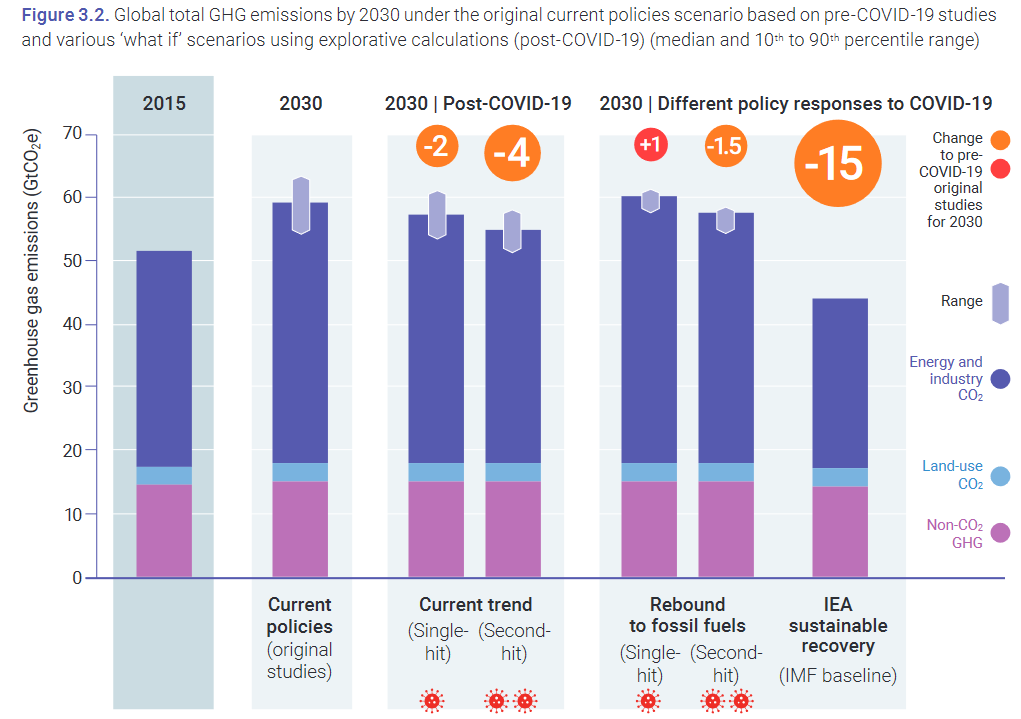The UNEP Emissions Gap Report of this year is available! Have you heard about it? It is a yearly review showing the gap between where greenhouse emissions are predicted to be in 2030 and where they should be to avoid the worst impacts of climate change!
This year’s report, being released in the context of the COVID-19 pandemic, is calling on governments to use the recovery strategies as a way to recreate our societies aiming to be more sustainable, resilient and inclusive. But what does it tell us?
First, the emissions are slowing but we still do not know if they are close to a peak. Growth in global greenhouse gases (GHG) emissions has averaged 1.4% / year since 2010, lower than the 2.4% / year from 2000 to 2009. However, dynamics at national level can differ.

Also, the gap (without COVID-19 data) is unchanged in the 2020 review since policy adjustments by the major emitters were minimum. This means that, without taking COVID-19 into account and following the current policies, we may have a mean temperature rise of 3.5°C by 2100.

This increase may be reduced if the net-zero GHG emission goals recently announced by the European Union and others are fulfilled, but the combined effects of all these goals may only cut it to 2.5 – 2.6° C, still higher than what we need (about 1.5 – 2° C).
And how did COVID affect the scenario? Projections show that CO2 emissions reduced 7% in 2020 (range: 2–12%). This is very important and unprecedented. For example, the 2007-2008 global financial crisis led to a 0.9% reduction in CO2 emissions.

Of course, nobody believes this is a solution, because how countries respond in the years after 2020 is more relevant, since previous analysis showed that emissions often rebound after crises. Thus, what we do from now on is what matters.
For example, if we followed the current trend (during the pandemic) we would have a decrease in 2-4 GtCO2 e by 2030. However, the rebound may cause a smaller reduction or even an increase! On the other hand, a reduction of 15 GtCO2e may be reached with a sustainable recovery.

We are behind the schedule but COVID-19 recovery strategies can be used to help. Governments and society, acting together, can rewrite our systems and behavior towards a more sustainable society. Especially now, after being reminded how fragile we are. For references and the full report.
This text was written by Jairo Barauna.

